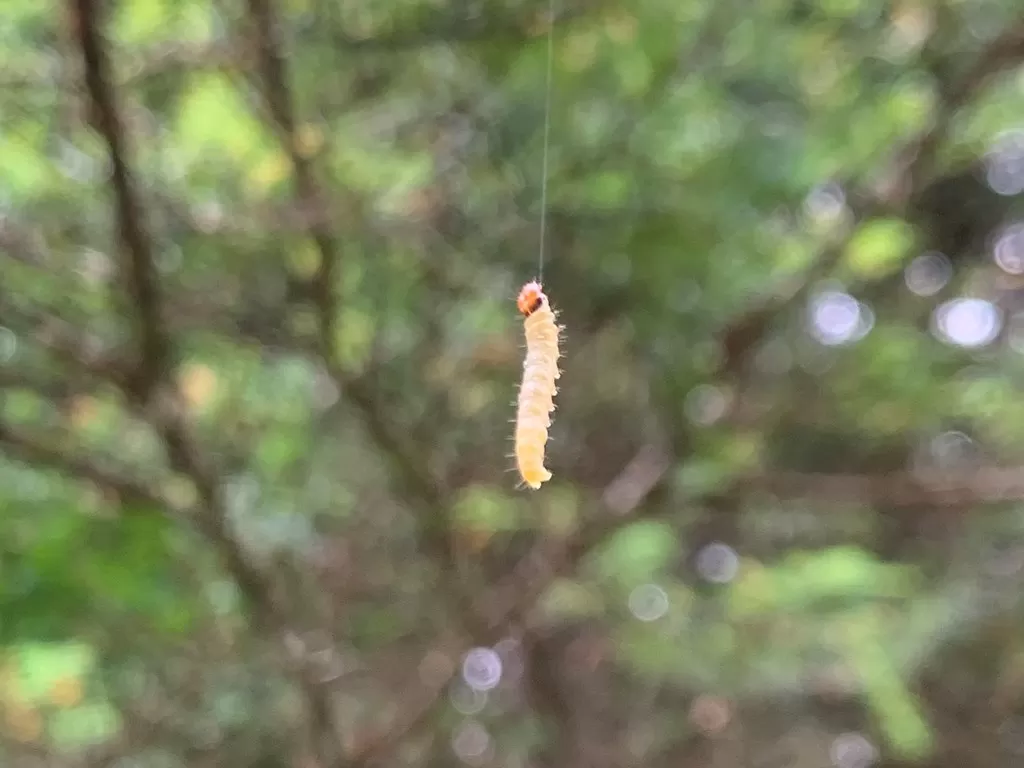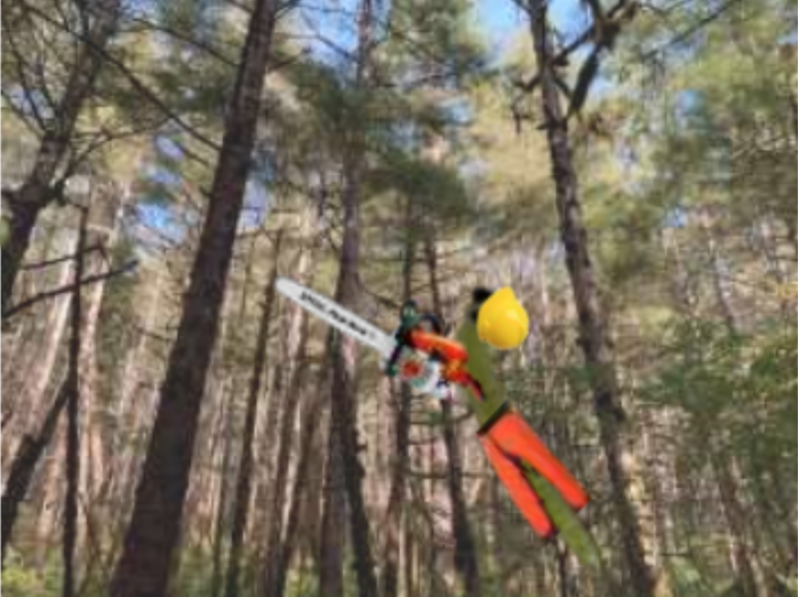
Insect infestations began tearing through Southeast Alaska years ago, leaving behind scores of balding trees and annoyed hikers. Those outbreaks are part of a natural cycle, and the latest appear to be slowing down. But a Forest Service entomologist says the Tongass National Forest might be out of the woods… For now.
If you’ve hiked around the Tongass in the last several years, you might remember walking face-first into a web, or feeling squirmy little bugs drop down your shirt collar. You may have passed swaths of evergreen trees with dead, yellow or rusty-red needles — or none at all — and wondered what’s wrong with them.
If any of those things describe your experience in the rainforest, you’ve witnessed the latest outbreak of hemlock sawfly larvae and western black-headed budworms — which actually aren’t worms at all, but larval moths. U.S. Forest Service Entomologist Elizabeth Graham, who has studied the critters for years, says the latest outbreak started in 2018, with an explosion of hemlock sawflies. Then in 2021, the western black-headed budworm outbreak blew up.
“That was really felt here in Petersburg and the central part of the Tongass, where we had just a lot of trees turning red, causing a lot of concern,” said Graham. “But now, we’re kind of on the other end of it. What happens with these insect populations — we call it ‘boom and bust.'”
Graham says it’s a natural cycle, and there’s little cause for concern to see the bugs come and go so dramatically. The insects are usually kept in check by disease, starvation, parasites, and predators — like the several species of parasitic wasps that live in the Tongass.
“They’re essentially what the movie ‘Alien’ was based off of!” said Graham. “They lay their eggs inside their host, the eggs hatch, they feed internally, and then they eventually burst their way out and go find a new host to lay eggs in.”
A type of fungus also keeps the insects in line. But Graham says extreme drought conditions in Southeast did a number on the rain-loving fungus in 2010, triggering the sawfly larvae outbreak. Over the next couple years, the insects munched about 385,000 acres of Tongass trees, until normal precipitation levels returned, bringing the fungus back with it.
But that didn’t mean trees — or hikers — in the region could catch a break from the caterpillar flare-up so soon. The budworm boom came next, and with a vengeance. They defoliated almost 700,000 acres of the Tongass from 2021 to 2023. But according to Graham, things are going back to normal.
“They have the perfect conditions that causes their populations to rise up,” said Graham. “That’s what we were experiencing the last few years where [there are] caterpillars everywhere, and trees turning red… But then, all of the natural control mechanisms that keep that population in check, they get a chance to catch up.”
Some may not miss having fewer bugs dangling in front of their faces while out on the trail. Graham, however, looks at the outbreaks with a different lens.
She calls the insects “Little Foresters.” When she does public lectures about the outbreaks, one of her slides includes a photoshopped image of a little budworm dressed in a hardhat and a fluorescent orange forestry vest — and wielding a tiny chainsaw. Even in the thick of the outbreaks, Graham said they’re just out there doing their little jobs.

(Photo courtesy of Elizabeth Graham)
“They’re out there, trimming the trees!” said Graham. “And while it’s really ugly, and unsightly when it’s happening — and I know people don’t appreciate having caterpillars hanging from the sky and falling on them and… pooping on them… What they are doing is playing a role in the forest, and they’re thinning some of the trees out.”
By and large, Graham says the bugs aren’t actually killing most of the trees they infest, even though it might look like it. They’re just giving them what she calls: “a bad haircut.”
“It looks nasty, and it may not look pretty… But we’ve all been there, and the only solution is time,” said Graham. “It’s allowing more light to reach the forest floor, all of that feeding and dropping of needles and then going to the bathroom — all of this fertilizer is now going into the forest. It opens up an opportunity for new trees to grow. It’s really pretty impressive if you think about these small, little insects that are actually changing the forest dynamics. I think it’s pretty awesome.”
Graham says budworm outbreaks on this scale usually only happen every 30 years or so — meaning, Tongass trees have some time to regrow their needles, and hikers are in for a long break from dangling insects.











